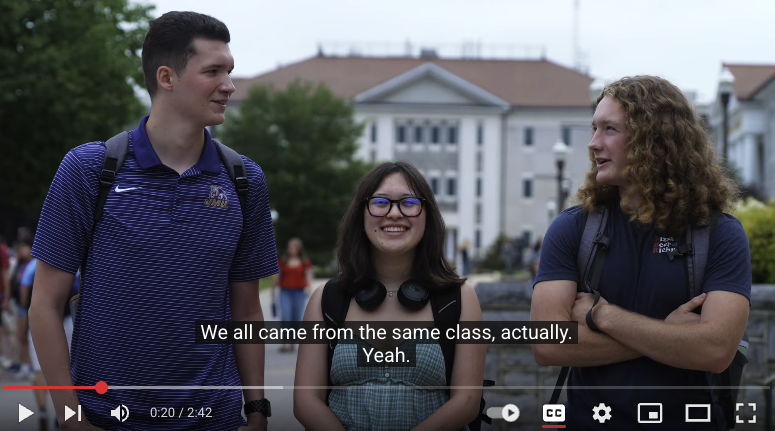Captions are synchronized text alternatives for the audio in any audio-visual media. Captions provide users with all of the same information conveyed through the audio track, including dialogue, non-speech sounds, and speaker information.
Transcription is the process of converting audio into text. This text output is called a transcript.
Captioning is the process of synchronizing a transcript with audio-visual media. For more information on the broader use of transcripts, please see the Transcripts page.
While similar, captions are not the same as subtitles. Subtitles visually convey speech only, usually for the purpose of understanding a film not in one’s native language. Subtitles lack important non-speech audio and therefore may not meet the accessibility standards that captions provide.
Expectations
Captions must be provided for all synchronized media, both pre-recorded and live. An exception exists only for pre-recorded synchronized media in rare situations. Because of how nuanced and infrequently this situation occurs, it is best to assume that all videos require captioning.
Captions must include all important dialogue and non-speech audio information including speaker identification. Captions must be synchronized to the timing of the audio in the audio-visual media.
Automatic transcription and captions that have not been reviewed or edited are insufficient to meet these expectations.
Why Captions are Important
Captions keep your audience engaged and avoid miscommunication. People use captions and transcripts for a variety of reasons such as:
- Accessibility for audience members who are d/Deaf, hard of hearing, and multilingual.
- Watching videos in sound sensitive environments.
- Supporting comprehension.
- Improving search engine optimization.
How To Implement
Consult the How to Caption at JMU Guide to learn how to do the following:
- Integrate captions and transcripts into your digital media.
- Search for and use media that is already captioned or transcribed.
- Use an accessibility vendor to caption or transcribe your selected media.
- Create your own captions.

WCAG Success Criteria
Meeting all of the above requirements (must statements) ensures that captioned audio-visual media content is in compliance with WCAG 2.1 (AA) as it relates to the following:
